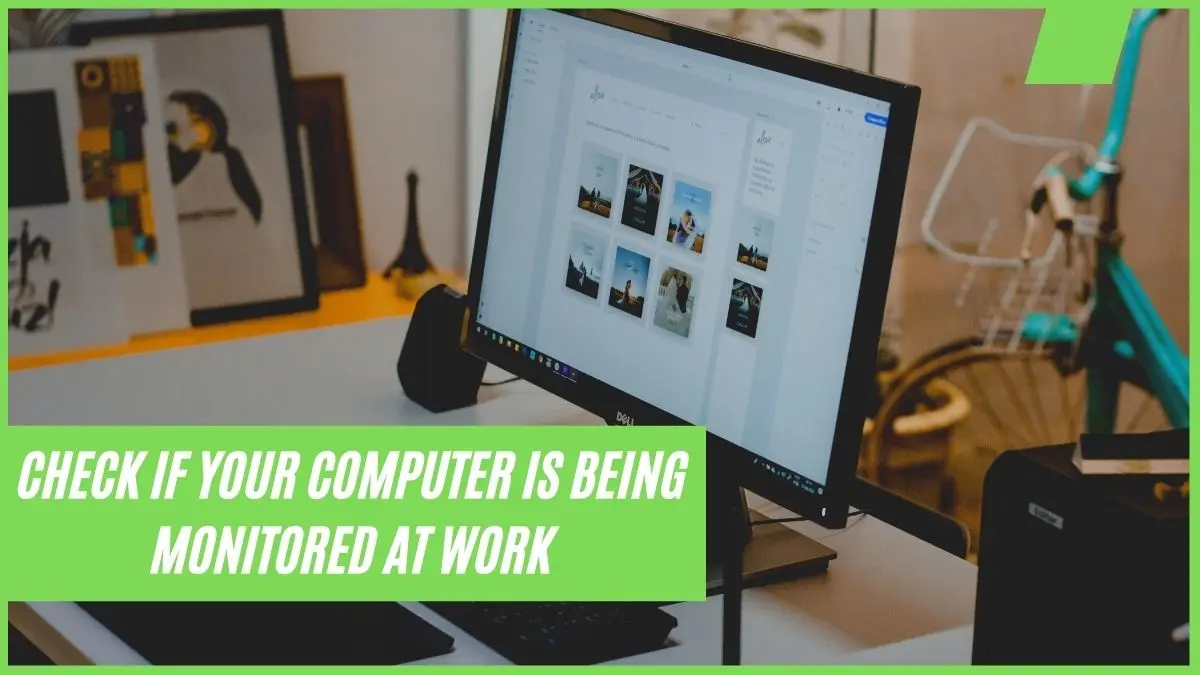How to Know if My Work Computer is Being Monitored
Have you ever had that nagging feeling that your boss might be keeping tabs on your computer activity?
It’s a common concern, especially in today’s digital age where businesses are using all sorts of techniques to monitor their employees’ productivity. One such technique is the installation of a “spy-like” program on employees’ computers to ensure that they are using company resources only for work-related activities.
While this approach might boost productivity, it can also leave some employees feeling uneasy about their right to privacy. If you’re in this boat and want to find out if your boss is watching you at work, don’t worry, we’ve got you covered!
In this post, we’ll share some ideas to help you start your research and determine if your computer is being spied on. So, sit back, relax, and read on to find out more about “is my computer being monitored?”
Key Highlights:
- How to know if my work computer is being monitored
- How to tell if your computer is being monitored
Check Task Manager if there’s a monitoring program running

The majority of businesses use third-party monitoring software, allowing the boss to view what you do on the work computer. You might be able to check through Task Manager whether the computer has been monitoring if your work computer runs Windows.
Choose Task Manager with a right-click on the taskbar. Look for an application that may be watching the computer on the Process tab. To assist you in determining the name, you might want to look into a top monitoring program. If you have discovered a name that was exactly the same, you are being watched. Mind it!
Can I then terminate the program?
Technically speaking, you can, but I don’t advise doing that personally.
The administrator likely receives a notification from the system and visits your room to re-enable it.
Can I consider uninstalling the program?
Given that it was installed by the administrator and that the computer you used was a client, it appears implausible. The monitoring program may need to be removed with the upstream’s consent, which is seemingly not possible.
What if I try to plug out the Ethernet cable?
Typically, an Ethernet cable used for internet connections connects the admin computer to the client computer. The system will instantly recognize which device has been disconnected when the cable is severed.
Ask the IT staff or the administrator casually

Not every monitoring program registers in Task Manager. Some of them run in stealth mode and are more sophisticated; they do not show up in installed apps.
My experience indicates that you can request that the admin, IT team, or any responding organization keep an eye on the employees. They typically won’t respond to such inquiries. Instead, ‘provoke’ them with a creative query to learn if they track client PCs.
For instance, I’ve used this query in the past (and it works).
Please, Adam, come over here. My pc isn’t working properly.
But Adam is not visiting my area. Instead, he gets into my PC and fixes the issue remotely. The majority of monitoring software comes with a remote control capability that lets them manage the client’s PC from the administrator’s computer.
I then realized that I have been watched throughout. Here are a few related questions you can ask to your IT team to cross-check whether your computer is being monitored or now.
- Smith, Can you solve this issue for me remotely?
- I want to ensure that my computer is secure. Are there any specific actions I should take to protect my privacy
- Adam, my computer just started to freeze. Can you see it on yours?
- Would you kindly direct me to blah blah blah, Jhonny?
Build the ideal question for your circumstance using your creativity. The more insightful the query, the more precise the response.
Check the Hiring Agreement!

Some firms will disclose if they kept an eye on the employees. It is stated in the employment contract or the company’s policies. If you still have the document, consider reading it carefully a second time in case you missed any concealed information. However, some businesses do not communicate this policy to their staff members clearly.
If your boss is a kind person who understands the privacy issue, he or she might gladly respond to your question provided that you don’t intend to hurt their feelings.
How to tell the IT team if your computer is being monitored
If you suspect that your computer is being monitored and you want to inform your IT team, here are some steps you can take:
- Be clear and concise: When you speak to your IT team, be clear and concise about your concerns. Explain why you think your computer is being monitored and what evidence you have to support your suspicions.
- Ask for help: Don’t accuse your IT team of wrongdoing or make assumptions about their actions. Instead, ask for their help in determining whether your computer is being monitored and what steps you can take to address the issue.
- Provide details: If you have noticed any unusual behavior on your computer or changes to your settings, provide this information to your IT team. They may be able to use this information to determine whether monitoring software has been installed on your device.
- Ask about company policies: Ask your IT team about the company’s policies regarding employee monitoring. This can help you understand whether monitoring is allowed and what activities are being monitored.
- Stay calm and professional: It’s important to stay calm and professional when speaking to your IT team about this issue. Accusing them of spying or being confrontational can create unnecessary tension and make it more difficult to resolve the issue.
- Follow up: If your IT team confirms that your computer is being monitored, follow up with your employer or HR department to address the issue. You may have legal rights to privacy at work, and it’s important to ensure that your employer is following applicable laws and regulations.
Remember, it’s important to balance the need for privacy with the legitimate reasons employers may have for monitoring employee activity. By approaching the issue calmly and professionally, you can help ensure that your privacy rights are respected while also promoting a productive and safe work environment.
Conclusion
There are various techniques to determine if someone is watching your computer at work, such as using Task Manager, asking the administrator a question, or going back and reviewing the hiring agreement.
The law must be followed in order to remain an employee. After all, employers who monitor their employees aren’t trying to violate your right to privacy; instead, they’re just trying to uphold standards at work and avoid unnecessary issues.
We’ve covered some of the simple ways for you to detect remote access on Windows and Mac computers out of the many ways to tell if someone is viewing your computer remotely. I hope it’s useful. Or, you can comment below and let us know what you think!
Also Read: How to Check Power Consumption of Your PC







